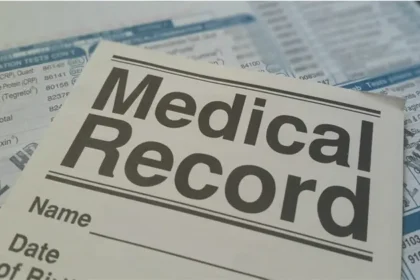The legal landscape surrounding catastrophic injuries is rife with complexities that can often leave victims feeling overwhelmed and underserved. Legal rights and protections exist to guarantee victims receive appropriate compensation for their injuries, but understanding these entitlements and maneuvering through the intricate legal procedures can be an intimidating task. The vital role of skilled legal representation in these cases cannot be overstated. But what exactly do these rights entail, and how does one effectively traverse the system to secure just compensation? Let’s explore further.
Understanding Catastrophic Injuries
Catastrophic injuries, as the term implies, can turn a person’s world upside down in an instant. These types of injuries usually result in long term effects that drastically alter one’s quality of life, frequently leaving individuals with permanent disabilities or chronic health issues. The range of catastrophic injuries is wide, encompassing severe burns, spinal cord and brain injuries, amputations, and multiple fractures, amongst others.
Understanding these injuries and their implications is essential not just for the victims, but for their families and care providers too. While the immediate shock and physical pain are certainly overwhelming, the long-term effects can be just as devastating. The individual may be unable to work or perform daily tasks, leading to financial strain. The emotional burden, coupled with potential social isolation, can lead to mental health issues.
Through understanding the impact of catastrophic injuries, we can empathize more fully with victims, advocating for their rights and supporting them in their journey to recovery or adaptation. We can also inform policy and practice, working towards prevention and better management of these injuries. At the end of the day, knowledge and empathy are powerful tools in the face of such life-altering events.
Identifying Your Legal Rights
Maneuvering the complex world of legal rights, victims of catastrophic injuries need to be fully informed about their entitlements under the law. The process begins with identifying negligence; the first step in establishing a personal injury claim. This means proving that another party’s reckless or careless action caused the injury.
Successfully identifying negligence, however, is only part of the equation. It is equally essential to accurately assess damages. This process includes quantifying not only the immediate medical expenses but also the long-term costs associated with recovery, rehabilitation, loss of earning potential, and non-economic damages like pain, suffering, and loss of enjoyment of life. Engaging with trusted catastrophic injury lawyers can be crucial in ensuring that all aspects of compensation are thoroughly pursued and achieved.
Navigating Personal Injury Laws
Understanding the intricacies of personal injury laws is an essential part of seeking justice for victims of catastrophic injuries. These laws encompass the legal remedies and defenses involved in civil lawsuits brought as a result of wrongful conduct, typically due to negligence.
Personal injury definitions vary, but they broadly cover any harm caused to a person’s body, mind, or emotions. This could range from injuries due to a car accident, a doctor’s medical malpractice, or even an unsafe product. It’s important to understand these definitions as they form the basis of any claim made.
Negligence standards, another key aspect of personal injury laws, focus on the conduct expected of a reasonable person. If the actions of the defendant fall below this standard, they may be held liable for any resulting injuries. For instance, if a driver fails to stop at a red light and causes an accident, they could be deemed negligent.
Navigating these laws can be overwhelming, especially while dealing with the aftermath of a catastrophic injury. But understanding them is essential to guarantee fair compensation. Consequently, seeking legal advice is recommended to help victims through this complex process.
The Process of Insurance Claims
While grappling with the complexities of personal injury laws is an important step in the journey towards justice for victims of catastrophic injuries, it is merely one piece of the puzzle. The insurance claim process, often a labyrinthine journey itself, is another essential phase that requires careful navigation and understanding.
The first step in the insurance claim process is to notify your insurance company of the incident, providing as much detail as possible. Following this, meticulous documentation is vital. This includes medical records, photographs of the injuries and incident scene, and any witness statements. In some cases, video footage can be a key element of your claim.
Claim documentation tips include keeping copies of everything you submit, organizing it in a chronological order, and keeping a record of communication with the insurance company. If your claim is denied or the settlement offered is unsatisfactory, don’t hesitate to challenge the decision.
Comprehending the insurance claim process can be an intimidating task, but understanding it can considerably improve the chances of a successful claim. Remember, you have rights and protections even in the face of a catastrophic injury. Don’t let the complexities of the process deter you from seeking justice.
Compensation Procedures Explained
Maneuvering the intricate path to compensation after a catastrophic injury can seem intimidating, yet it is a critical part of achieving justice. This process is often complex, involving several stages where strategic decision-making and effective advocacy are key.
A fundamental step involves evidence collection, a meticulous process that requires gathering medical records, accident reports, and witness testimonies. This evidence forms the bedrock of your claim, substantiating the injuries suffered and the negligent actions that caused them.
Following evidence collection, settlement negotiations commence. These discussions are of paramount importance, as they can lead to a fair resolution without resorting to a lengthy trial. The negotiation process requires legal expertise, as insurance companies often employ tactics to minimize their payouts. It’s at this juncture that having a competent legal representative on your side can make a significant difference.
Appealing Denied Claims
Despite best efforts in negotiation, there are instances when claims are unjustly denied, leading to the need for an appeal process. An appeals process can be complex but it is an essential route to contemplate if you believe your claim was unfairly rejected. Through this process, you may have another chance to present your case and potentially receive the compensation you deserve.
Evidence gathering is a significant aspect of appealing denied claims. It is imperative to meticulously collect and organize all relevant proof that can strengthen your case. This may include medical records, accident reports, witness statements, and any other pertinent data that can support your claim.
Claim documentation is another fundamental part of the appeal process. This involves accurately recording all aspects of your case, from the nature of the incident to the medical treatments you received. Having a thoroughly documented claim is essential to guarantee that no key facts are overlooked and that the full extent of your injuries and damages are clearly presented.
While the appeals process can be intimidating, it is an important step in asserting your legal rights and protections as a victim of a catastrophic injury. With the right approach and resources, you can navigate this challenging process and secure the justice you deserve.
Hiring a Personal Injury Lawyer
In the aftermath of a catastrophic injury, securing legal representation is an essential step in seeking rightful compensation. The process of selecting an appropriate personal injury lawyer, one who understands your unique situation and is equipped to represent your interests effectively, can greatly impact the outcome of your case. Moreover, having a clear understanding of the legal fees involved guarantees you are prepared for the financial aspects of your claim, promoting transparency and avoiding any unexpected costs.
Choosing the Right Lawyer
Traversing the legal landscape after a catastrophic injury can feel like an intimidating task. It is essential at this juncture to select the right lawyer, one whose qualifications and experience align with your unique needs. A well-qualified lawyer can guide you through the complexities of the legal system, helping you understand your rights and the avenues available for compensation.
Look for a lawyer who specializes in personal injury law, with a track record of effectively representing clients with catastrophic injuries. Important lawyer qualifications may include their education, years of experience, areas of specialization, and their record at trial.
Do not underestimate the power of client testimonials. They provide insight into the lawyer’s expertise, work ethic, and level of commitment to their clients’ cases. Client testimonials often reveal how the lawyer communicates, their respect for clients, and their ability to achieve favorable outcomes.
While the process might seem overwhelming, choosing the right lawyer is a significant step towards achieving justice. With the right legal representation, you can focus on your recovery, knowing that your legal rights and interests are being fiercely protected.
Understanding Legal Fees
Steering through the financial implications of hiring a personal injury lawyer can be as complex as the legal process itself. Understanding legal fees is vital to make informed decisions about your representation.
Legal fees can take different forms. Lawyers might charge contingency fees, meaning they only get paid if they win your case, taking a pre-agreed percentage of the settlement. This approach might be beneficial for victims who lack upfront payments.
Alternatively, some lawyers might require legal retainers, which are upfront payments that the lawyer draws from as work is done. Transparency in billing is fundamental in such cases, as clients should know how their funds are used.
Fee structures can also include flat fees for specific services or hourly rates. These attorney costs must be detailed in client agreements, guaranteeing no hidden charges.
Legal expenses, separate from attorney fees, like court costs, should also be clarified. These could be included in the contingency fee or charged separately.
It’s vital to have a clear, transparent understanding of all these aspects. The right lawyer will guarantee you comprehend all costs involved, providing you with peace of mind in an already stressful situation.
Frequently Asked Questions
What Mental Health Resources Are Available for Catastrophic Injury Victims?
Catastrophic injury victims can access a range of mental health resources, including individual and group therapy options. Support groups also play a vital role, providing a shared space for emotional healing and mutual understanding.
Can Family Members File a Lawsuit on Behalf of a Catastrophically Injured Relative?
Yes, family members can initiate a lawsuit on behalf of a catastrophically injured relative through a guardian ad litem. In cases of wrongful death, they can also seek justice and compensation for their loss.
How Does a Catastrophic Injury Affect Ones Ability to Work in the Future?
A catastrophic injury can greatly impact an individual’s work capacity. Necessary workplace accommodations or vocational rehabilitation may be required to navigate these challenges, enabling a return to productive employment in an adapted capacity.
What Are the Long-Term Medical Costs Associated With Catastrophic Injuries?
Long-term medical costs for catastrophic injuries often involve substantial expenses, including ongoing treatments and rehabilitation. These costs can drastically affect a victim’s financial stability, highlighting the importance of adequate compensation and insurance coverage.
How Can Catastrophic Injury Victims Apply for Disability Benefits?
Catastrophic injury victims can apply for disability benefits by demonstrating disability eligibility, typically through medical documentation. The application process involves submission of specific forms to the relevant governing body, often a social security office.










